
Publisher:
Bonnie King
CONTACT:
Newsroom@Salem-news.com
Advertising:
Adsales@Salem-news.com

~Truth~
~Justice~
~Peace~
TJP
Apr-06-2011 03:33

 TweetFollow @OregonNews
TweetFollow @OregonNews
Pharmaceutical Industry Greed and the Greatest Medical Disaster in Human History
T Ruhl and J Holcombe for Salem-News.comThe 1918 flu epidemic was probably the deadliest plague in human history, killing more than 50 million people worldwide. - NY Times
 Courtesy: libcom.org |
(LONDON) - Playing on fear of the 1918 flu and terrorists, GW Bush got Pandemic Preparedness laws passed in states across the country, just as he used 9/11 to get the Patriot Act passed. Both were written long before September 11, 2001.
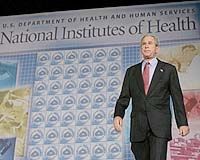 US Pres. George W. Bush approaching |
Those laws remove all rights and include mandatory vaccination with unknown and untested vaccines, forced diagnostic testing, forced taking of bodily samples (of any kind, not excluding organs), forced unknown "medical" treatments, forced "decontamination" with any and unknown chemicals.
The laws essentially lay out the groundwork for forced medical experiments on any person or group in the US, with imprisonment as the alternative (where such experiments could occur regardless) - all without proof required that there is any emergency or even that an infectious disease be present.
The laws also include the burning down of homes and seizure of property "if" they are declared "contaminated" with that word left undefined and without requirements to prove there is any. All farms in the US potentially contain anthrax spores though not in enough concentration to harm anyone (and anthrax is easily treated today) but a single spore could provide justification for seizing property.
In this way, farmland (and any property) across the US could potentially stolen by those behind these laws (the pharmaceutical industry which put Bush into office, and which has had long standing ties to the Bush family since WWII in Germany when they stole assets from people, ran concentration camps and also ran infamous forced medical experiments).
Declaring an Emergency: Under this Act, any Governor could appoint himself dictator by declaring a "public health emergency." He doesn't even have to consult anyone.
The Act requires that he "shall consult with the public health authority," but "nothing in the duty to consult ... shall be construed to limit the Governor's authority to act without such consultation when the situation calls for prompt and timely action."
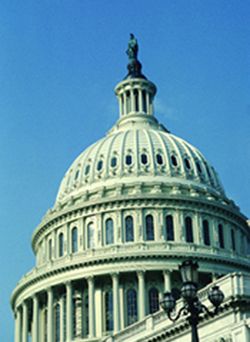
The legislature is prohibited from intervening for 60 days, after which it may terminate the state of emergency only by a two-thirds vote of both chambers. (Apparently, it does not have the authority to find that the state of emergency never really existed.) Article III, Section 305(c). There is also the possibility that the Governor could declare a new emergency as soon as his powers were about to expire.
What is a public health emergency? It is whatever the Governor decides it should be. By the definition in the Act, it could be an "occurrence"-or just an "imminent threat"-of basically any cause that involves a biological agent or biological toxin that poses a "substantial risk" of a "significant number" of human fatalities or disability. Article I, Section 104(g). Terrorism need not be involved; any threat of an epidemic would suffice.
The Act does not define "substantial risk." Could it mean a 1-in-1,000,000 chance? Risks of that magnitude are already being invoked as a cause for alarm, say of a measles outbreak with transmission through an unvaccinated child, and a pretext for removing exemptions to mandatory vaccines. The EPA also uses such low (and purely hypothetical) risk as the rationale for very costly regulations, so the precedent is well-established.
Is a "significant number" five (the number of deaths from anthrax as of the date of this writing); 24 (the number of deaths from chickenpox in 1998 and 1999 combined, 12 of them in persons under the age of 20, used as a reason for mandatory childhood vaccination); 100 cases of AIDS; or is it thousands of deaths from smallpox, as most readers may assume-or a single case?
It could be any of these because the definition is at the sole discretion of the Governor. The most plausible of the dire threats generally cited is a smallpox outbreak.
However, given the nature of the disease and advanced medicine and sanitation, such an outbreak could be contained without any of the extreme measures in this Act, just as in the 1970s. (See, for example, "Super Smallpox Saturdays?" by Michael Arnold Glueck, M.D., and Robert J. Cihak, MD, http://WorldNetDaily.com, Nov. 15, 2001.)
The projection that a new virulent virus - as deadly as the 1918 virus - might erupt at any time and kill millions was the entire basis on which Bush got these laws pushed through.
The President began his remarks with the now-obligatory scare-story from 1918 ‘At this moment, there is no pandemic influenza in the United States or the world. But if history is our guide, there is reason to be concerned. In the last century, our country and the world have been hit by three influenza pandemics -- and viruses from birds contributed to all of them. The first, which struck in 1918, killed over half-a-million Americans and more than 20 million people across the globe …’
But several mysteries - the most scary aspects surrounding the 1918 flu - are inconsistent with a solitary virulent virus but, are satisfactorily explained by historical accounts (which dovetail with work by Karen Starko, MD) and point instead toward pharmaceutical industry greed as the likely cause of not a solitary virus but of a medical disaster of global and epic proportions.
1. The "flu" appeared suddenly and simultaneously around the world in widely dispersed locations, with no contact between people (there was no air travel at the time).
It was a shorter war than the vaccine-makers had planned on, only about a year for us, so the vaccine promoters had a lot of unused, spoiling vaccines left over which they wanted to sell at a good profit. So they did what they usually do, they called a meeting behind closed doors, and plotted the whole sordid program, a nationwide (worldwide) vaccination drive using all their vaccines, and telling the people that the soldiers were coming home with many dread diseases contracted in foreign countries and that it was the patriotic duty of every man, woman and child to get “protected” by rushing down to the vaccination centers and having all the shots.
The pharmaceutical industry finding means to continue selling left over and even contaminated vaccines well known. Bayer's internal documents show they knowingly dumped HIV-contaminated vaccines on Japan, Spain and France, killing hemophiliacs, especially children, and spreading the disease to families. No Bayer executive ever faced charges in the US and Bayer responded that "Bayer behaved responsibly, ethically and humanely... [and its actions] were consistent with regulations." Video
2. People died with bloody fluid in their lungs.
The NY Times: Dr. Karen M. Starko ... has published an article suggesting that overdoses of the relatively new “wonder drug” could have been deadly.
What raised Dr. Starko’s suspicions is that high doses of aspirin, amounts considered unsafe today, were commonly used to treat the illness, and the symptoms of aspirin overdose may have been difficult to distinguish from those of the flu, especially among those who died soon after they became ill.
Some doubts were raised even at the time. At least one contemporary pathologist working for the Public Health Service thought that the amount of lung damage seen during autopsies in early deaths was too little to attribute to viral pneumonia, and that the large amounts of bloody, watery liquid in the lungs must have had some other cause.
3. This virus was different and more terrible than any other because for the first time young people died along with older people, something not seen before or since.
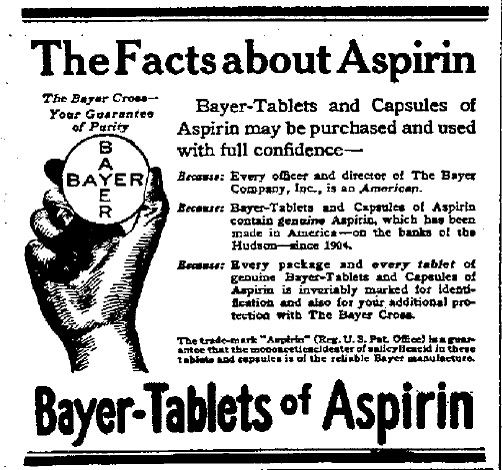 Bayer ad from 1918 |
Aspirin kills young people as readily as it can kill older people. People were "well in the morning and dead by evening.
Overdoses of aspirin kill rapidly.
But of the many factors that might have influenced the outcome in any particular case, Dr. Starko wrote, aspirin overdose stands out for several reasons, including a confluence of historical events.
In February 1917, Bayer lost its American patent on aspirin, opening a lucrative drug market to many manufacturers. Bayer fought back with copious advertising, celebrating the brand’s purity just as the epidemic was reaching its peak.
Aspirin packages were produced containing no warnings about toxicity and few instructions about use. In the fall of 1918, facing a widespread deadly disease with no known cure, the surgeon general and the United States Navy recommended aspirin as a symptomatic treatment, and the military bought large quantities of the drug.
The Journal of the American Medical Association suggested a dose of 1,000 milligrams every three hours, the equivalent of almost 25 standard 325-milligram aspirin tablets in 24 hours. This is about twice the daily dosage generally considered safe today.
Allopathic doctors who were routinely using aspirin lost a huge percentage of patients, while homeopaths of the day did not use aspirin and lost very few patients, even to pneumonia.
http://www.nesh.com/main/nejh/
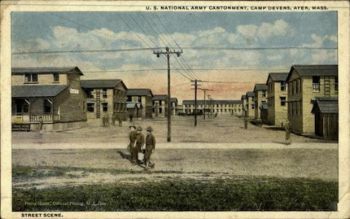 In the fall of 1918, 100 soldiers died daily in Camp Devens, Mass. |
I did not lose a single case of influenza; my death rate in the pneumonias was 2.1%. The salycilates, including aspirin and quinine, were almost the sole standbys of the old school and it was a common thing to hear them speaking of losing 60% of their pneumonias. -Dudley A. Williams, MD, Providence, Rhode Island.
Fifteen hundred cases were reported at the Homeopathic Medical Society of the District of Columbia with but fifteen deaths. Recoveries in the National Homeopathic Hospital were 100%.-E. F. Sappington, M. D., Philadelphia.
I have treated 1,000 cases of influenza. I have the records to show my work. I have no losses. Please give all credit to homeopathy ... -T. A. McCann, MD, Dayton, Ohio.
One physician in a Pittsburgh hospital asked a nurse if she knew anything better than what he was doing, because he was losing many cases. "Yes, Doctor, stop aspirin and go down to a homeopathic pharmacy, and get homeopathic remedies." The Doctor replied: "But that is homeopathy." "I know it, but the homeopathic doctors for whom I have nursed have not lost a -W. F. Edmundson, MD, Pittsburgh.
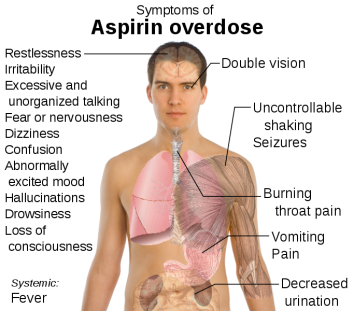 |
There is one drug which directly or indirectly was the cause of the loss of more lives than was influenza itself. You all know that drug. It claims to be salicylic acid. Aspirin's history has been printed. Today you don't know what the sedative action of salicylic acid is. It did harm in two ways. It's indirect action came through the fact that aspirin was taken until prostration resulted and the patient developed pneumonia. -Frank L. Newton, MD, Somerville, Massachusetts
Aspirin and the other coal tar products are condemned as causing great numbers of unnecessary deaths. The omnipresent aspirin is the most pernicious drug of all. It beguiles by its quick action of relief of pain, a relief which is but meretricious. In several cases aspirin weakened the heart, depressed the vital forces, increased the mortality in mild cases and made convalescence slower. In all cases it masks the symptoms and renders immeasurably more difficult the selection of the curative remedy. Apparently aspirin bears no curative relation to any disease and it ought to be prohibited. -Guy Beckly Stearns, MD, New York
Three hundred and fifty cases and lost one, a neglected pneumonia that came to me after she had taken one hundred grains of aspirin in twenty-four hours. -Cora Smith King, MD, Washington, DC.
I had a package handed to me containing 1,000 aspirin tablets, which was 994 too many. I think I gave about a half dozen. I could find no place for it. My remedies were few. I almost invariably gave Gelsemium and Bryonia. I hardly ever lost a case if I got there first, unless the patient had been sent to a drug store and bought aspirin, in which event I was likely to have a case of pneumonia on my hands. -J. P. Huff, MD, Olive Branch, Kentucky.
In reading the accounts of the epidemic it seems that most of the deaths were caused by a virulent pneumonia that was especially devastating to those who depressed their system with analgesics-the most common being aspirin.
There are totalitarian Pandemic Preparedness laws still in place in states across the country that were put there by George Bush at the behest of the pharmaceutical industry, laws which would give them absolute control over every person in the country and a means to steal any assets. Those laws are in place solely based on fear stemming from the greatest medical catastrophe in human history, one the pharmaceutical industry, through greed to sell unused vaccines and to sell aspirin, appears to have caused.
In isolating the pharmaceutical industry as the most likely cause millions of death globally during 1918, one comes to the heartening conclusion that no virulent virus threatens mankind, but it simultaneously becomes apparent that the pharmaceutical industry does. And if the following quote is accurate, with the "Pandemic Preparedness" laws they have put in place, here and internationally, the pharmaceu
Also see: Apr-01-2011: Saying Good-Bye to Fear of the 1918 FluBy J. Holcombe for Salem-News.com
Articles for April 5, 2011 | Articles for April 6, 2011 | Articles for April 7, 2011

Quick Links
DINING
Willamette UniversityGoudy Commons Cafe
Dine on the Queen
Willamette Queen Sternwheeler
MUST SEE SALEM
Oregon Capitol ToursCapitol History Gateway
Willamette River Ride
Willamette Queen Sternwheeler
Historic Home Tours:
Deepwood Museum
The Bush House
Gaiety Hollow Garden
AUCTIONS - APPRAISALS
Auction Masters & AppraisalsCONSTRUCTION SERVICES
Roofing and ContractingSheridan, Ore.
ONLINE SHOPPING
Special Occasion DressesAdvertise with Salem-News
Contact:AdSales@Salem-News.com

Salem-News.com:
googlec507860f6901db00.html

Terms of Service | Privacy Policy
All comments and messages are approved by people and self promotional links or unacceptable comments are denied.
[Return to Top]
©2025 Salem-News.com. All opinions expressed in this article are those of the author and do not necessarily reflect those of Salem-News.com.